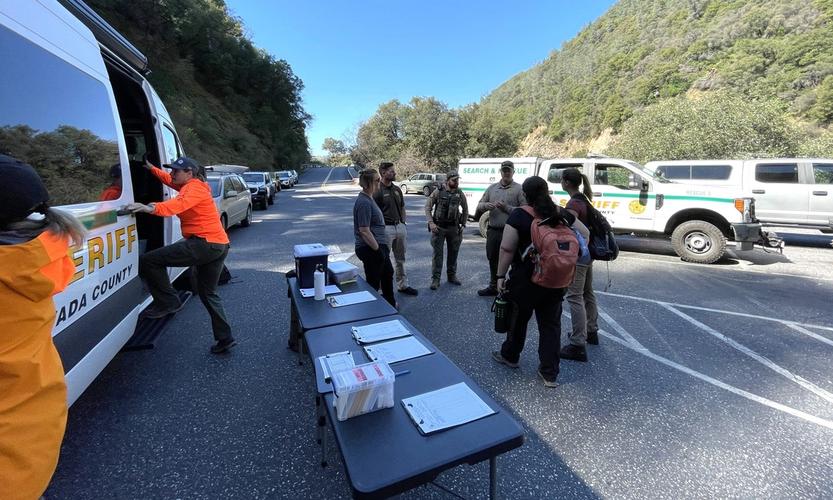Multiple Causes Found for Local Tree Mortality
By Duncan Kennedy and Carl Butz
October 27, 2022
Over the past year while driving to and from Quincy to collect each new edition of the paper from the printer, Feather Publishing, the Messenger’s staff has noticed large amounts of dying trees in the vicinity of the Yuba Pass on both sides of the mountain. Being curious about the nature and extent of this situation, we inquired with Tahoe National Forest’s administration to find useful information for you, our readers. In an interview with David Fournier, Tahoe National Forest’s forest-wide Natural Resources Staff officer, we were surprised to learn that there are multiple agents of disease behind the recent outbreaks of tree death in the upper North Yuba watershed and Turner Canyon above Sattley. According to Fournier, the large swathes of dead trees seen near Sattley are the work of large swarms of bark beetles; in contrast, the die-off closing campgrounds between Bassetts and the top of the pass are the result of a serious fungal root rot pathogen. Intrigued, we asked for more information. Bark beetles of the family Scolytinae are a native group of insects who are natural predators of sick and dying trees in western mixed-conifer forests. Under normal conditions, these beetles will kill one tree per every two to three acres of forest by boring into their fleshy cambium layer and excavating egg chambers, then will attract further attackers to these trees by releasing pheromones to signal their victory. However, overstocked forests created by a lack of regular disturbance with the end of logging and the rise of fire suppression have created far more of these stressed trees, giving the beetles far more potential prey and allowing them to explode in population. As if the overstocking alone was not enough of an issue, recent climate change has increased temperatures and reduced water availability, stressing trees further and eliminating their main way of fighting back – producing large amounts of pitch to quite literally wash the beetles out of their bark. Conservation authorities, federal agencies and forest product companies all generally agree that reducing the number of trees on the land, and by extent the water demand and competitive stress on the trees, is the only viable way to prevent massive outbreaks in a drier climate. However, none of these groups seem to be capable of acting in a timely manner to curb beetle infestations – already, it is too late for the massive number of pines, cedars and particularly firs on the Yuba Pass that have already died. In contrast, the campgrounds on the west side of the pass (Chapman, Sierra and Yuba Pass, for example) are closed because of a different pathogen – Heterobasidion annosum, or annosus root rot. These fungi form brown and white shelflike conks on dead wood to spread their spores, which infest new locations via fresh stumps or wounds on standing trees. Once inside, the fungus spreads to other trees via root grafts and mycelia, causing their roots to rot and their foliage to slowly die – though sometimes fully grown trees will fall over while showing none of these symptoms. To prevent the spread of this root rot, which is considered the most economically important forest pathogen in the Northern Hemisphere, foresters may apply borate compounds on fresh stumps and tree wounds to halt infections. However, its spread through root grafts and mycelia may require clear-cutting an entire swath of forest to prevent further spread – as is seen at these campgrounds. This increase in dead trees can increase fire hazard within an area and encourage the establishment of other diseases and invasive species, completely transforming the local ecosystem. These trees, if not removed within one to two years of their deaths, are no longer commercially useful and can only be used as biomass fuel in power plants that do not currently exist in the areas where the outbreaks occur. As has been noted by groups ranging from university researchers and conservation nonprofits to timber interests and U.S. Representatives, inaction in removing these trees and treating these pathogens is building towards a potential crisis that the west may simply not be ready to handle.
Featured Articles

Human Remains Found Near South Yuba Bridge in March Identified →
December 17, 2025
Authorities identify remains found in March as Aaran Sloan Taylor, seeking next of kin.
Transfer Station Burn Suspended After Community Concerns →
December 16, 2025
Sierra Hardware Plans Extensive Repairs After Flood Damage →
December 8, 2025
Sheriff’s Office Accepts $60,000 Grant for New Search and Rescue Team →
December 2, 2025
Confusion Surrounds Release of the Plumas County Grand Jury’s Report →
December 4, 2025